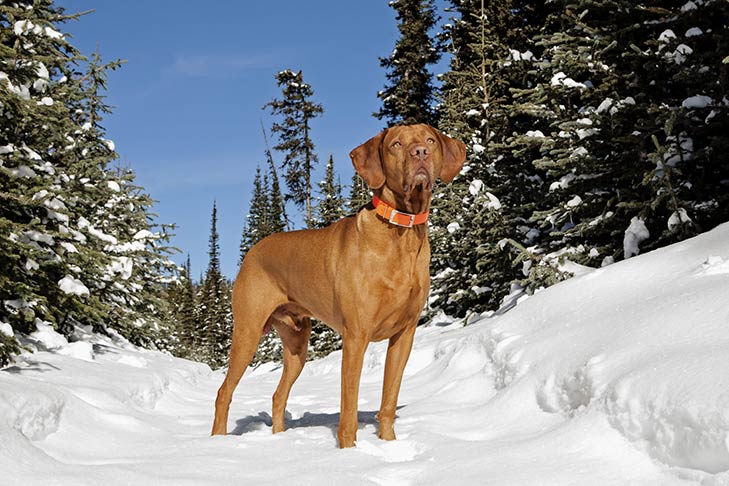The Vizsla is a multipurpose gundog with a red coat that is ideal for extended days in the field. These tough but graceful athletes have been the pride of Hungarian sportsmen for decades, and their recognition in America is growing every year. The sleek golden-rust coat of the Vizsla makes him immediately recognizable. They are the epitome of a lean, agile hunter’s companion, standing between 21 and 24 inches at the shoulder. A facial expression that is tender and loving when at home and intense when at work is framed by long, silky ears. Vizslas develop strong bonds with their owners and detest being left alone because they are a hunting breed that must cooperate closely with people. Vizslas are multi-talented athletes that excel in a variety of sports and pursuits. They are graceful and enthusiastic trotters with exceptional endurance, making them the perfect running or bicycling partners. ‘If you don’t have the time to foster this breed’s full use of its brain, you’re squandering a good dog,’ a breed expert tells us.
Vizsla
Average sizes and life
expectancy of the breed.
Height
22-24 inches (male)
21-23 inches (female)
Weight
55-60 pounds (male)
44-55 pounds (female)
Life Expectancy
12-14 years
Breed Traits & Characteristics
About the Breed

Owning a dog is not just a privilege; it’s a responsibility. They depend on us for, at minimum, food and shelter, and deserve much more. When you take a dog into your life, you need to understand the commitment that dog ownership entails.
 Health
Health
Recommended Health Tests From the National Breed Club:
- Hip Evaluation
- Ophthalmologist Evaluation
- Thyroid Evaluation
 Grooming
Grooming
 Exercise
Exercise
 Training
Training
 Nutrition
Nutrition
History
The Magyars fled the Russian steppes in the mid-800s and destroyed Western Europe for 50 years. These ruthless marauders rode across the continent, leaving a trail of murder and ruin in their wake. They spread their wings as far west as Paris and as far south as the tip of Italy before landing in what is now Hungary.
Magyar cavalry superiority was based on three qualities: speed, agility, and toughness. As a result, Magyar warriors carefully bred these characteristics into their horses—as well as their canines. It was either keep up or perish in this lightning-fast nation on horseback. The swift red dogs of the Magyars, predecessors of the present Vizsla, kept up.
Hungarian aristocrats and warlords polished these dogs throughout the ages, developing the modern Vizsla. The breed became well-known as a quick, all-purpose hunting dog capable of doing almost anything. That eagerness has earned Vizslas generations of American fans.
The first Vizsla to arrive in America was smuggled out of Communist Hungary in 1950 with the assistance of a U.S. Employee of the State Department. Fifty years later, Chartay, a Vizsla, became the first dog in AKC history to win titles in five separate sports—a quintuple champion. It’s no surprise that the words “versatile” and “Vizsla” are frequently used interchangeably.




